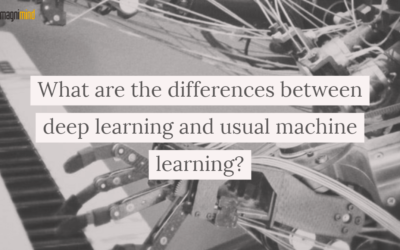Recent Articles
How Data Scientists Can Improve Data Skills?
Oct 25, 2021 | Data Science Blog
With the emergence of data science, the present business domain has become logical like never before. They now correlated occurrences and events rationally to identify the cause of problems and come up with possible solutions. As a massive amount of data is being generated by organizations, the search for skilled data scientists has increased exponentially.
How Long Does It Take To Learn Data Science Totally For Finding A Good Job?
Oct 25, 2021 | Data Science Blog
If you decide to learn data science just for the sake of landing a good job, you may lose steam midway unless you are passionate enough about the domain, have a clear idea of what you want to do, and a roadmap that would let you achieve your goals. If you love the wide variety of data that gets generated today and want to learn how it can help you take real-world, data-driven actions, data science is the field you should consider to get into. But before answering how long it would take you to learn data science to land a good job, it’s important to know where you are in your journey and what skills you need to acquire to meet your career goals.
What Are The Differences Between Deep Learning And Usual Machine Learning?
Oct 25, 2021 | Deep Learning Blog
In recent times, both the terms ‘machine learning’ and ‘deep learning’ are creating a huge buzz around the AI landscape. The world is steadily becoming an artificial intelligence-first one where digital assistants together with other services act as our primary source of information. This concept is backed by the two terms we just mentioned. Both deep learning and usual machine learning are methods of teaching AI to perform tasks.
What Does It Take To Become A Top-notch Data Scientist?
Oct 25, 2021 | Data Science Blog
Unquestionably, the career as a data scientist is one of the most promising options these days and it’s driving a huge number of enthusiasts to become a part of this community. Data science courses are being taken up by people across the globe. In addition, enthusiasts are also making transitions – coming to data science from different departments. However, the rise in the popularity of the career as a data scientist isn’t only generating lots of opportunities but creating a lot of competition as well – for both aspiring data scientists and those who are already working in the field. So, these days, the major question is how ‘to become a top-notch data scientist’ to stand out of the pack.
What Would Be The High Paying Future Jobs For Data Scientists?
Sep 16, 2021 | Data Science Blog
Data science features significantly when you talk about high paying future jobs. To understand what’s driving this trend, which experts say will only grow bigger with time, you have to know how the technology landscape has experienced tremendous growth and undergone a sea change over the last few years, thanks to a high degree of reliability on computer programs, data-based analysis, and digital technology. Working with huge sets of data and making data-driven decisions, in particular, have become a norm in most sectors – from banks and fintech to transportation, IT, and more. After all, almost each interaction with technology has data at its core. Thus, be it your online purchase at marketplaces like Amazon, streaming recommendations for you on Netflix or Amazon Prime, your Facebook feed, or even the facial recognition necessary to sign into your phone, almost everything leverages data to perform certain operations. No wonder why data science is the flavor of the season. Experts in the domain of data science predict that in several companies and industries that are less tech-forward than others, where data science today plays a supportive (or back-office) role in the business, the scenario will change soon in the future as these companies and industries get ready to access a huge amount of data – both structured and unstructured, as well as feedback loops. And that’s what makes the job of data scientists one of the most coveted ones in today’s world.
How People Use Data Modeling With Advantages In Everyday Life?
Sep 16, 2021 | Data Science Blog
Data modeling stands for the process of developing a descriptive diagram that demonstrates relationships between different types of information which are to be stored in a database. It’s a theoretical presentation revolving around data objects and associations between different data objects. Data modeling is an important skill for every data science professional, whether one is architecting a new data store or doing research design for his/her organization. To excel in this key component of data science, one needs to have the ability to think systematically and clearly about the major data points to be stored as well as retrieved, and how they need to be related and grouped.
Sign up to stay up-to-date with the latest developments and insights, and join the community of forward-thinkers today






